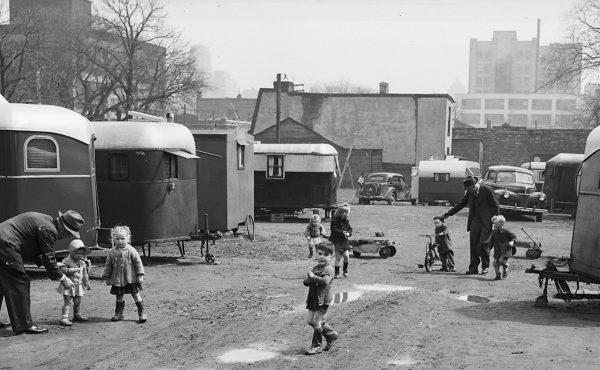

Home repair
Toronto has developed a reputation for letting things decay. There was that old heritage building at George and Shuter that collapsed last May, quickly followed by an outcry that we must do more to preserve the remnants of our past. And there’s Nathan Phillips Square, which lays crumbling while those at City Hall struggle to find funds for the promised revitalization.
Receiving less attention, though just as crumbling, is Toronto’s stock of social housing. Maintenance and repair have fallen so far behind, in fact, that the city itself has been awarded the dubious distinction of being the worst slumlord in T.O.
Unlike City Hall’s front yard and heritage properties, Toronto’s social housing is more easily ignored. According to the chair of Toronto’s Affordable Housing Committee, Giorgio Mammoliti, when the province put cities in charge of the provincial social-housing stock in 1998, Toronto inherited hundreds of millions in repair costs. While the maintenance cost of social housing is unlikely to be a high-profile issue in the Oct. 10 provincial election, Torontonians should be pressuring candidates to find a real long-term solution to this problem — after all, as Mayor David Miller likes to point out, more people live in Toronto Community Housing than live in all of PEI.
Walk through the parts of Regent Park that have yet to be torn down for redevelopment, and you’ll get a sense of how our social housing is managed. You’ll see trees that have been standing dead for two years, broken, rusted benches and grass that hasn’t been cut in two months. To meet the mounting maintenance needs of Regent Park — Toronto’s oldest social housing project, built in the 1940s — parts of the property were sold off. The density will double, and the area will be transformed into mixed-income housing. The tradeoff, however, is a lower number of subsidized units.
“The Toronto Community Housing solution to the dilemma is happening with public housing authorities across the States and Canada,†says Michael Shapcott of the Wellesley Institute. “The result is a net loss of housing when we’re in critical need.â€
When the Liberals were in opposition, they were screaming at the Conservatives for not fulfilling their responsibility to make sure social housing was well maintained. Since they were elected, however, very little has changed. Toronto’s bills, meanwhile, have ballooned. “The fix is extremely simple,†argues Shapcott. “Put money into a capital reserve for social housing.â€
Affordable housing stats
• The waiting list for affordable housing in Toronto sits at over 70,000. This year, under 1,000 new units will be built.
• In April 2005, the province promised 11,060 new affordable rental units and 4,500 affordable ownership units across Ontario. As of February of this year, 2,341 and 356 units, respectively, have been built.
photo by Steven Hoang




3 comments
Affordable rental units are not affordable for governments. Obviously. But the fix is extremely simple – rent supplements.
http://communities.canada.com/nationalpost/blogs/toronto/archive/2007/09/07/a-nicer-place-to-live.aspx
Would Dale Duncan change her sun glasses?
The rose-tint is too dark for her to see things clearly at City Hall.
The solution is simple. Ayess.com offers social housing in quantity to cities around the world for about $400 per month. I think they are already providing housing in cities across the USA such as NY with something like over 50% savings on housing for the city.